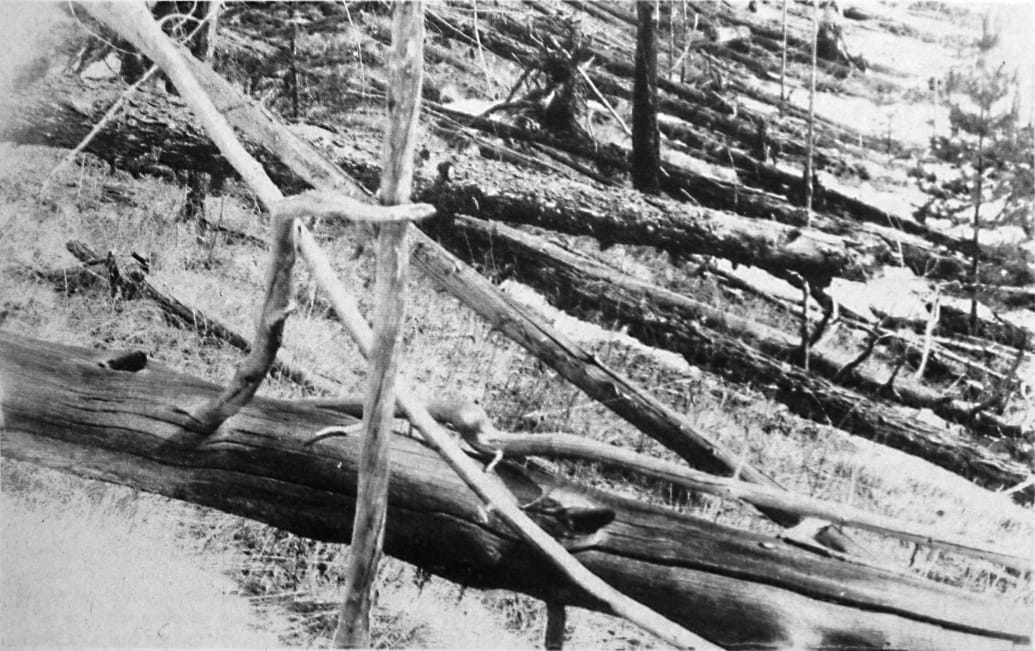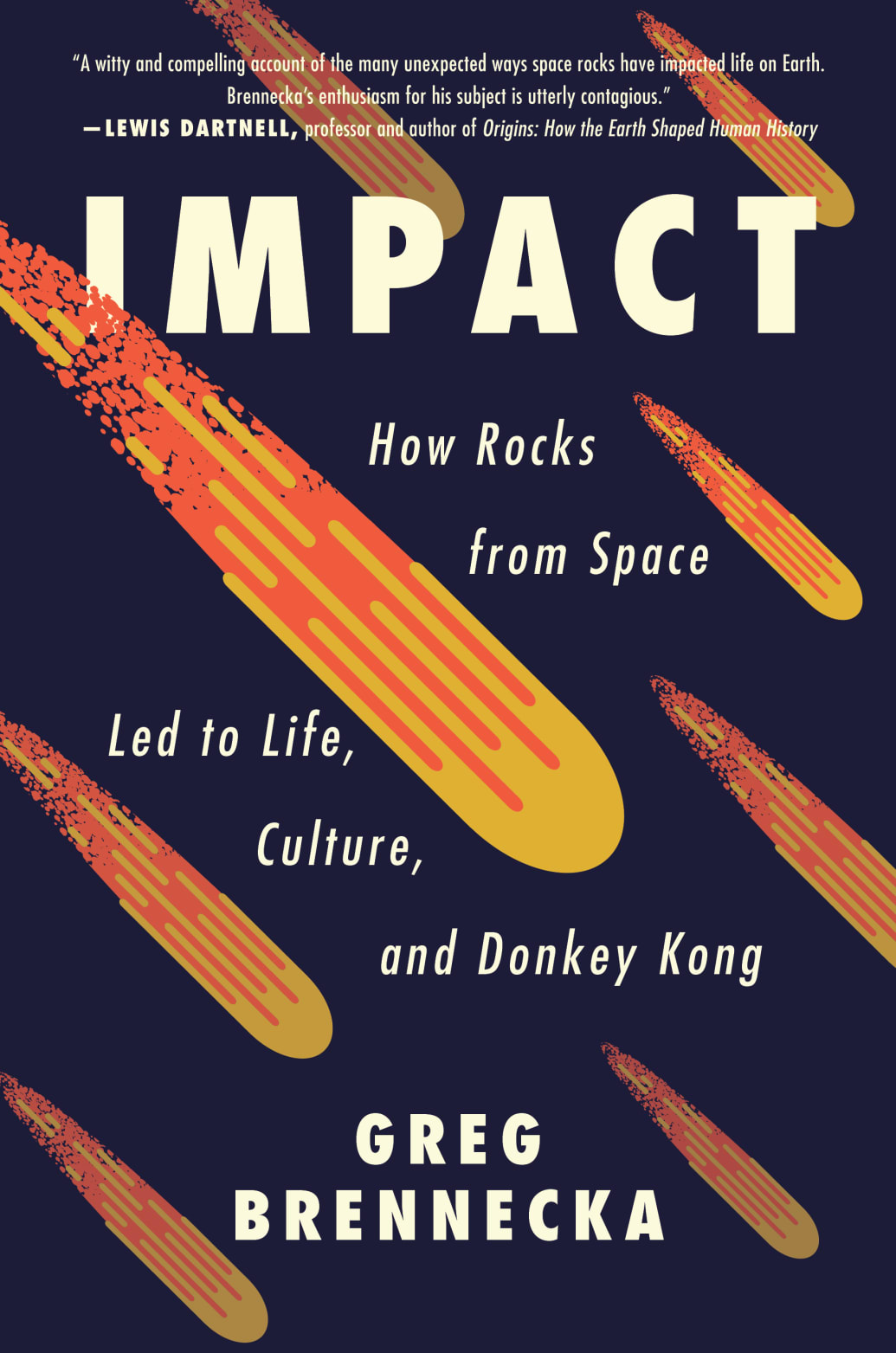Do you have an impending sense of doom that you will be unlucky enough to be struck by a meteorite? Or, even more consequentially, do you think Earth as we know it will end with the supersonic arrival of a giant flying rock from space? The effect of Hollywood disaster movies on the human psyche is hard to overstate here, but as you may have recently read, like, perhaps in all previous chapters of this book, space-based material landing on Earth is a thing that happens. And if it hits you or it is big, it will quite likely be problematic. As such, addressing the dangers and annoyances associated with flying bits of space rock is probably worth doing, because—and I cannot stress this enough here—I dooonnn’t wanna miss a thiiiiing.
Historically, people have not feared death by meteorite. The main reasons for this are (1) only the last few hundred years did most people become aware that rocks could fall from space, and (2) past generations had other, more pressing things to worry about (for example, avoiding cholera, famine, and/or oxen stampedes). However, modern humans widely understand that they could die from a flying rock and many of us have loads of extra time to worry about such things. This combination, and the fact that stray meteorites are far more exciting to worry about than realistic issues like heart disease, car accidents, pandemics or gun violence, means there has been a significant uptick in the death-by-meteorite fear department, which is why it feels prudent to address it here.
Numerous stories suggest that meteorites have hit people, and many of these may be true; but, unless the fall is witnessed by other people, recovered, and analyzed, the authenticity of such events can be difficult to parse, particularly given the financial incentives now realized for possessing a physical piece of such a bizarre event or the short-lived notoriety associated with human/meteorite interaction. This is certainly not meant to disregard other stories of meteorite strikes on people, but confirming such events is not straightforward.

The hole in the Hodges house caused by the Sylacauga meteorite in 1954.
Courtesy HarperCollins.
Certainly, an interesting addition to this book might be a list of the hundreds of deadly meteorite strikes, narrow escapes, and associated harrowing stories, but thankfully, this is not possible. Even generously, historical evidence of death by meteorites is thin. However, there is solid evidence of an unfortunately positioned cow in northwestern Venezuela that met an untimely end thanks to a direct hit from the Valero meteorite on October 15, 1972. After seeing an intense flash of light and hearing a loud bang in the evening, three farm hands went out the next morning to investigate and found that one of their bovine buddies had been in the direct path of a ~110 lb. (50 kg) falling rock. It did not end well for the cow, but the farmer did report that what was left of the cow was butchered and eaten. Moooo-ving on.
The best-documented case of a meteorite impacting a human comes from near the small town of Sylacauga, Alabama, in 1954. On November 30, Ann Hodges was enjoying an afternoon nap on the couch when a grapefruit-sized meteorite crashed through the roof of her home, ricocheted off a large wooden radio, and struck her on the hip. Even though it caused some serious bruising, things could have been worse for Hodges—she managed to survive a meteorite hitting her, and she became a minor celebrity in the process, which is far more productive than most of my afternoon naps.
A more recent case of a person being struck by a meteorite comes from Mbale, Uganda, in 1992. The rather large Mbale meteorite exploded in the sky during its journey through Earth’s atmosphere, causing a loud noise that was heard widely throughout the heavily populated area. The resulting meteorite shower covered over eight square miles and resulted in over 330 pounds (150 kg) of material being recovered, mostly by local military personnel. While many buildings were peppered and many falling stones were observed, the only strike victim was a young boy who was hit, luckily, by only a very small piece of the meteorite after it had bounced off a tree.

Downed trees remained as scars when scientific expeditions were studying the Tunguska Event about twenty years later.
Courtesy HarperCollins
Digging through historical archives, it is at least possible to get a sense of meteorite strikes and their direct effect on humans through the generations, even though it is almost impossible to confirm these cases so long after the fact. One very impressive list was compiled by researcher Kevin Yau and colleagues by looking through ~2,600 years of reported Chinese meteorite falls that have impacted humans or human structures. Yau came up with seven events that resulted in human casualties, some of which were reported to have killed tens of thousands of people, although there are good reasons to believe the absolute numbers from the larger events are unreliable. Just uncovered in 2020 were three corroborating government documents written in Ottoman Turkish that discuss the death of one man and the serious injury of another from a meteoritic airburst that occurred in what is now modern-day Iraq on August 22, 1888. It is hard to argue that this is not a legitimate record of a human death caused by a meteorite, but the offending stone has yet to be located and verified. There are other reported, and undoubtedly many more unreported, fascinating events such as these reports scattered throughout history, but most historians who keep track of such things likely would claim they have better things to do than comb through generation after generation of governmental records in various languages to find evidence of a truly obscure way of dying. Understandable. But even if we are extremely charitable to the records, known and unknown, and say that 50,000 people in all of history have died a meteorite-related death, then this would still be an incredibly rare way to die when statistics are considered. Fifty thousand people killed by meteorites would still be less than the number of people in the last fifty years that have died by falling off ladders.
Even though deaths caused by meteorite strikes are few, there have still been consequential events over the years that have raised some serious eyebrows when it comes to the potential dangers of rocks from space. The first serious wake-up call to people and governments around the world happened in 1908, in what is almost the geographic center of Russia. The Tunguska Event, as it is known from the name of a nearby river, is the largest “impact” event in recorded human history, although the event did not result in the formation of a traditional crater. The exact nature of the event is still unknown, but scientists largely agree that the massive explosion was caused by an airburst from a meteorite or comet. Seismic readings from the event were noted across Europe and Asia, and airwaves from the blast were detected on the East Coast of North America. The destruction caused by the explosion is almost unimaginable: it leveled almost a hundred million trees over ~830 square miles, an area larger than twenty-five of the countries on Earth. It would have destroyed any major metropolitan area, and deaths could have been in the millions. Fortunately, the event happened in an incredibly sparsely populated area of Siberia where only three people were reportedly killed, along with a herd of reindeer. Just like for Ann Hodges, things could have been much worse for humanity.

Courtesy HarperCollins
Due to the remoteness of the location, proper study of the Tunguska Event was limited, and scientific expeditions did not reach the site until 1921, thirteen years after the event occurred. Damage from meteoritic material, particularly significant damage, is rare, so the fact that the Tunguska Event did not spur much action may not be surprising given its limited financial and human toll—and it was 1908, so technology was a bit more limited by today’s standards. But Tunguska at least put the planet on notice of the dangers that lurk in deep space.
Excerpted from IMPACT: How Rocks from Space Led to Life, Culture, and Donkey Kong by Greg Brennecka, published by William Morrow. Copyright © 2022 by Greg Brennecka. Reprinted courtesy of HarperCollins Publishers. All rights reserved.
"avoid it" - Google News
January 30, 2022 at 01:16PM
https://ift.tt/UeF7aRGSp
A Short History of Death by Meteorite and How to Avoid It - Daily Beast
"avoid it" - Google News
https://ift.tt/vm7tNOuYJ
https://ift.tt/pVxcP9bCs

No comments:
Post a Comment